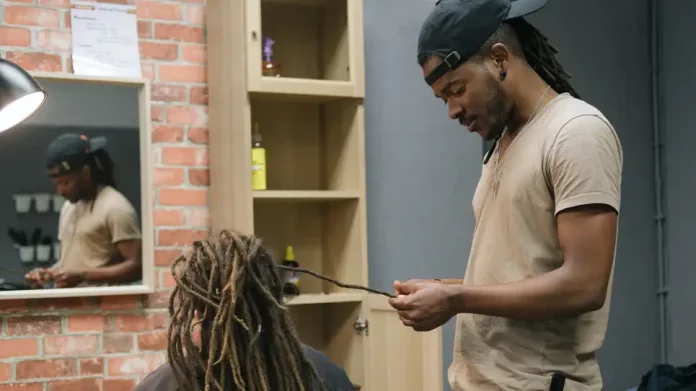Learning to do your own hair is a precious skill these days. Many salons continue to remain closed around the country, and those hairdresser who are taking appointments could be booked for months to come. But twisting your own locs can be like trying to wax your own back: You can’t see what you’re doing, and it hurts more than you think. But while you can’t grow eyes on your hands, there are some simple ways to make re-twisting your own locs a little bit easier.
Collect what you’ll need before you begin
If you have never done your own touch ups or re-twisting, there are few things you may need: Twisting gel or creme, hair clips, a comb for parting, a towel, and a hair dryer. InStyle magazine has a list of suggested natural hair care tools to start with.
Wash your locs before you re-twist
First, you want to work on clean hair. Just like any hair type, things like dirt, sweat, and even lint can build up in your hair, and you don’t want to twist these things further into your locs. Locologist Yannie with Locs by Yannie suggests washing with a peppermint soap. Particularly “anti-residue,” which “helps strip the locks of excess oils that accumulates during the days or weeks between washing.” Additionally peppermint can stimulate hair follicles and gives your hair a fresh scent.
You want to rub the scalp and let the shampoo rinse through the full loc. ThatSister.com, a site focused on hair, beauty, and fashion for Black women, suggests washing starting from the scalp, getting a good lather, then rinsing thoroughly by letting the water and shampoo run down the full length of the locs. The NaturAll Club suggests an apple cider vinegar rinse in place of conditioner for locs and styling.
Part and twist your locs
Using the pointed end of a comb will help you make precise sections where you the new hair growth will be twisted into an existing loc. (You can also section off the hair with your fingers if creating sharp lines isn’t necessary for the look you are going for.) Bringing the new growth into a loc is the most important part of re-twisting.
Use a finger toothbrush to simultaneously brush in smaller hairs while twisting the loc. This tool is small and nimble, so you won’t miss a hair. Use the twist gel or creme at the root to keep the hairs in place.
InStyle Magazine spoke with Stasha Harris of Magic Fingers Studio who says, “To secure the twist, you can use a double-prong sliver clip or twist the loc until it creates a little bantu knot at the base.”
There’s debate on which way to twist—clockwise or counterclockwise—but you want to decide based on your own hair’s curl pattern. “Clockwise is preferable to counterclockwise because more people have circular growth patterns that run in the clockwise direction,” according to the website Knatty Dread.
Aside from twisting the new growth in, you can also try the palm rolling technique. This method is done by using the palm of your hand rather than the tips of your fingers with twisting. After joining the new growth, put the loc strand between your palm and roll your palm across the loc to bind the strands together.
Dry your locs to set your new twists
There is a reason it’s called a “wash and set.” Allowing proper dry time lets the hair set and can leave your twist lasting much longer. Adequate drying can also prevent mildew from building up after washing and styling. Dry times can take up to three hours for drying depending on your hair length. You can test the dryness by squeezing the strand between your fingers: if it feels damp, you may need a bit more time to dry.
A great way to bring the salon home is to hook your home hair dryer up to a bonnet hair dryer attachment. This soft cap attaches to your regular blow dryer, allowing you to relax and dry your hair just like the professionals.


